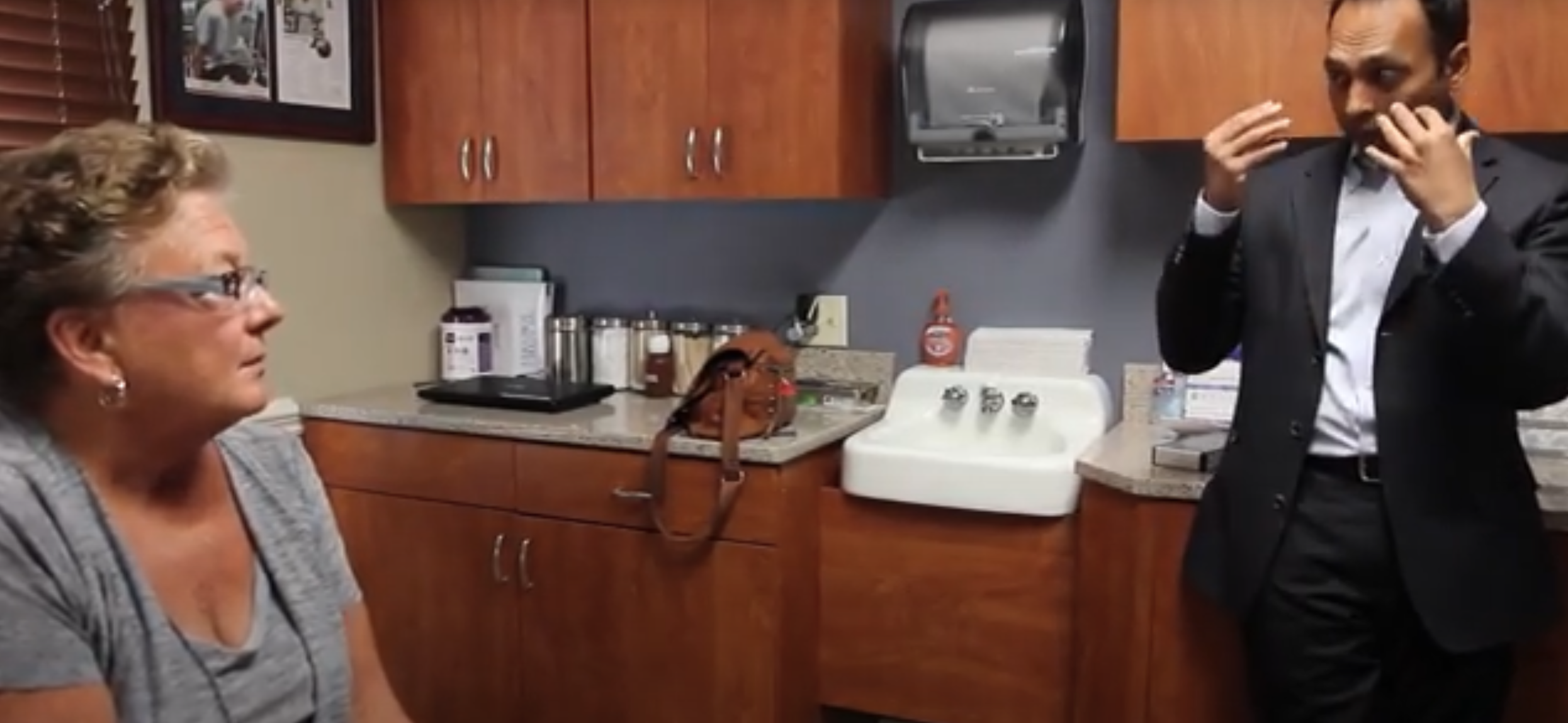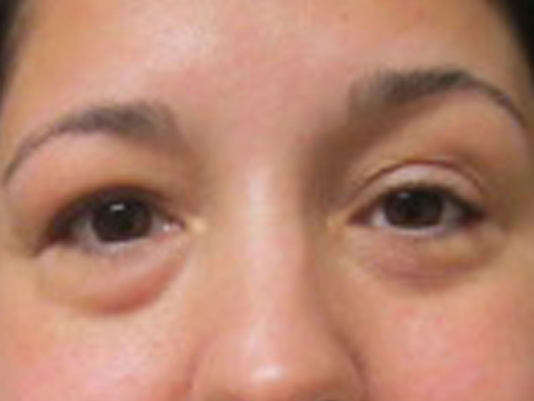Graves’ Ophthalmopathy- Mary Ellen’s Story
January is National Thyroid Awareness Month. The thyroid is a small gland located at the base of the neck. Although relatively small, the thyroid plays a huge role in the body, influencing the function of many important organs, including the heart, brain, liver, kidneys, and skin. Graves’ disease is a condition that can cause the thyroid to become overactive (hyperthyroidism).
Graves’ Ophthalmopathy, also known as Graves’ eye disease, is a condition that affects the orbit around the eye, characterized by upper eyelid retraction, lid lag, swelling, redness, conjunctivitis, and bulging eyes. Ophthalmopathy occurs in as many as 50% of Graves’ disease patients. During its early, active stage, Graves’ ophthalmopathy can be treated with non-surgical therapies, such as corticosteroids. Patients who do not respond to steroids or other conservative measures may benefit from surgical intervention. Dr. Tushar Patel offers a unique surgical treatment for Graves’s Ophthalmopathy called orbital decompression surgery.
Mary Ellen’s Story
Upon being diagnosed with Graves’ disease, Mary Ellen asked her endocrinologist how she could fix the appearance of her eyes. Both of her eyes were affected, but one was more prominent. Besides being bothered by her appearance, Mary Ellen was experiencing pressure and headaches due to the bulging condition of her eyes. An MRI revealed Mary Ellen was a candidate for orbital decompression surgery with Dr. Patel, and she moved forward with scheduling her surgery. Mary Ellen’s surgery was a success, and she has been feeling better ever since. Not only has her appearance been improved, but the pressure behind her eyes has been alleviated as well. Watch her testimonial video below to hear more about her experience.
To learn more about graves’ ophthalmopathy and the orbital decompression surgery we offer, please schedule an appointment at one of our clinics nearest you!


